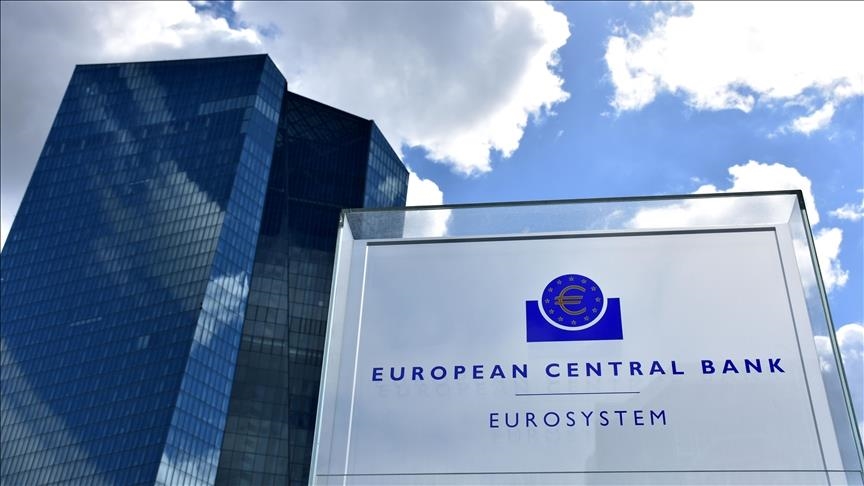The European Central Bank (ECB) is the central bank responsible for monetary policy and financial stability within the Eurozone, which consists of the 20 European Union (EU) countries that have adopted the Euro (€) as their currency. Here’s a detailed overview of its structure, functions, and role:
1. Overview
- Established: June 1, 1998
- Headquarters: Frankfurt, Germany
- President: The ECB is led by a President, currently Christine Lagarde (as of 2024).
- Members: Eurozone countries (20 EU member states that use the Euro).
The ECB is an independent institution that works in collaboration with national central banks (NCBs) of the Eurozone through the European System of Central Banks (ESCB) and the Eurosystem.
2. Structure of the ECB
The ECB operates through a hierarchical structure consisting of three key decision-making bodies:
A. Governing Council
- The main decision-making body.
- Composed of:
- ECB’s Executive Board members.
- Governors of the national central banks of Eurozone countries.
- Functions:
- Sets monetary policy (interest rates, money supply).
- Makes decisions on the conduct of operations.
B. Executive Board
- Responsible for the daily operations of the ECB.
- Composed of:
- The President.
- The Vice-President.
- Four other members appointed by the European Council.
- Functions:
- Implements monetary policy as decided by the Governing Council.
- Manages ECB operations.
C. General Council
- Includes representatives from all EU member states, even those outside the Eurozone.
- Functions:
- Contributes to coordination and advisory functions.
- Oversees the transition to the Euro for new member states.
3. Functions of the European Central Bank
The ECB’s primary mandate is to maintain price stability in the Eurozone. It performs several key functions:
A. Monetary Policy Implementation
- Controls inflation and ensures stable prices (target: close to but below 2% inflation).
- Uses tools like:
- Interest Rate Setting: Adjusts key rates such as the deposit rate, refinancing rate, and lending rate.
- Open Market Operations: Buys or sells government bonds to control liquidity.
- Quantitative Easing (QE): Purchases assets to stimulate the economy during downturns.
B. Issuance of the Euro
- Sole authority to issue Euro banknotes.
- Ensures the security and reliability of the currency.
C. Banking Supervision
- Through the Single Supervisory Mechanism (SSM), oversees significant banks in the Eurozone to ensure stability.
- Works to prevent financial crises by monitoring systemic risks.
D. Financial Stability
- Analyzes and mitigates risks to the Eurozone financial system.
- Coordinates with national authorities and the European Stability Mechanism (ESM).
E. Managing Foreign Exchange Reserves
- Manages the Eurozone’s foreign currency reserves.
- Intervenes in foreign exchange markets to stabilize the Euro when necessary.
F. Economic Research and Analysis
- Conducts studies on economic and financial trends to guide policymaking.
- Publishes reports and forecasts to inform markets and policymakers.
4. Key Policies and Tools
The ECB uses various tools to achieve its goals:
- Interest Rates: Sets benchmark interest rates to influence borrowing and lending in the economy.
- Asset Purchase Programs (APP): Buys government and corporate bonds to inject liquidity.
- Targeted Longer-Term Refinancing Operations (TLTROs): Provides low-cost loans to banks to encourage lending to businesses and consumers.
- Forward Guidance: Communicates future policy intentions to shape market expectations.
5. Collaboration with Other Institutions
The ECB works closely with:
- European Commission: For fiscal policy coordination.
- European Banking Authority (EBA): To ensure harmonized banking regulations.
- National Central Banks: Implements monetary policy through the Eurosystem.
6. Challenges Faced by the ECB
- Inflation Control: Balancing between curbing inflation and supporting economic growth.
- Diverging Economies: Addressing economic disparities between stronger (e.g., Germany) and weaker (e.g., Greece) Eurozone economies.
- Climate Change: Integrating sustainability into monetary policy.
- Digital Euro: Developing a central bank digital currency (CBDC) to modernize payments.
7. Achievements
- Stable Inflation: Maintained relatively low inflation since its inception.
- Crisis Management: Played a crucial role in mitigating the 2008 financial crisis and the Eurozone debt crisis.
- Banking Union: Enhanced supervision and resolution mechanisms for Eurozone banks.
8. Future Goals
The ECB aims to:
- Tackle climate-related financial risks.
- Launch the Digital Euro for faster, secure digital transactions.
- Strengthen economic integration within the Eurozone.
- Support sustainable development and green finance initiatives.
The European Central Bank remains a key pillar of the Eurozone economy, ensuring financial stability and economic resilience while adapting to new challenges in a dynamic global environment.
